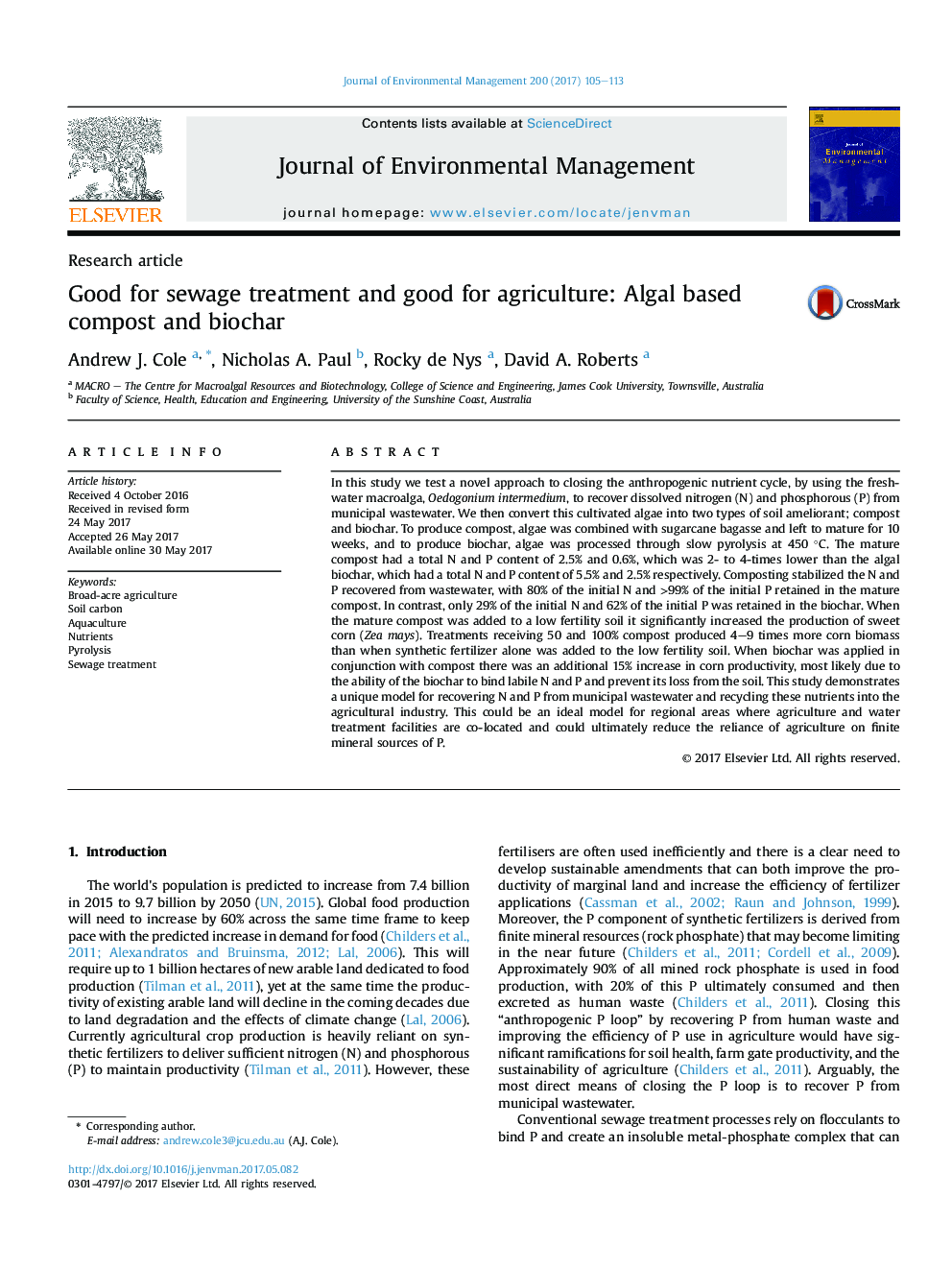| کد مقاله | کد نشریه | سال انتشار | مقاله انگلیسی | نسخه تمام متن |
|---|---|---|---|---|
| 5116322 | 1485217 | 2017 | 9 صفحه PDF | دانلود رایگان |
- Algal biomass can recover nitrogen and phosphorous from municipal waste water.
- This biomass can be transformed into compost or biochar for agricultural re-use.
- More than 80% of the N and >99% of the initial P is retained during composting.
- Compost improved corn growth by 4-9 times relative to synthetic fertilizer.
- The co-addition of biochar improved the growth rate of corn by an additional 15%.
In this study we test a novel approach to closing the anthropogenic nutrient cycle, by using the freshwater macroalga, Oedogonium intermedium, to recover dissolved nitrogen (N) and phosphorous (P) from municipal wastewater. We then convert this cultivated algae into two types of soil ameliorant; compost and biochar. To produce compost, algae was combined with sugarcane bagasse and left to mature for 10 weeks, and to produce biochar, algae was processed through slow pyrolysis at 450 °C. The mature compost had a total N and P content of 2.5% and 0.6%, which was 2- to 4-times lower than the algal biochar, which had a total N and P content of 5.5% and 2.5% respectively. Composting stabilized the N and P recovered from wastewater, with 80% of the initial N and >99% of the initial P retained in the mature compost. In contrast, only 29% of the initial N and 62% of the initial P was retained in the biochar. When the mature compost was added to a low fertility soil it significantly increased the production of sweet corn (Zea mays). Treatments receiving 50 and 100% compost produced 4-9 times more corn biomass than when synthetic fertilizer alone was added to the low fertility soil. When biochar was applied in conjunction with compost there was an additional 15% increase in corn productivity, most likely due to the ability of the biochar to bind labile N and P and prevent its loss from the soil. This study demonstrates a unique model for recovering N and P from municipal wastewater and recycling these nutrients into the agricultural industry. This could be an ideal model for regional areas where agriculture and water treatment facilities are co-located and could ultimately reduce the reliance of agriculture on finite mineral sources of P.
178
Journal: Journal of Environmental Management - Volume 200, 15 September 2017, Pages 105-113
